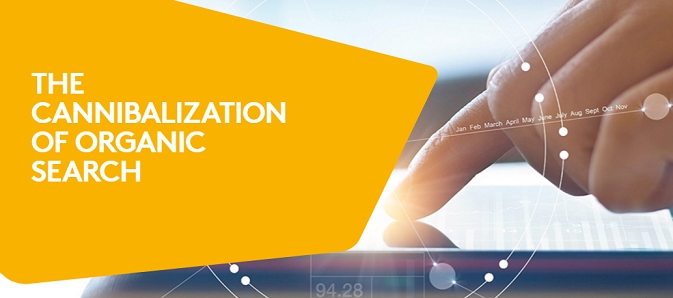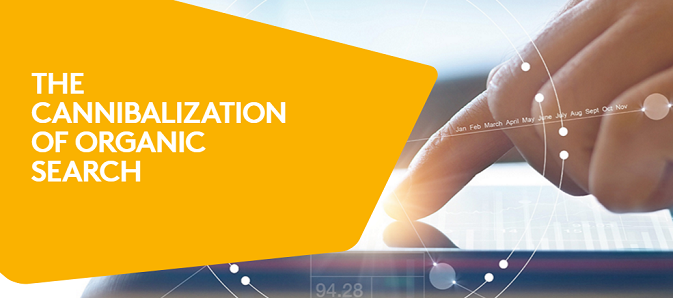
 We all thought Google had injured paid search as we know it.
We all thought Google had injured paid search as we know it.
The company rolled out significant changes to its desktop Search Engine Results Page (SERP) layout last year. Essentially, it removed the sidebar of paid search results to the right of the page, leaving paid search with up to four ads at the top and three new added ads at the bottom of the page, leaving organic search sandwiched in the middle.
The sidebar change caused much panic among search marketers, who anticipated an increase in costs due to the reduced inventory, but some months in, there seems to have been minimal impact in cost. However, there is a casualty: paid search’s overlooked counterpart, Organic Search (SEO). Now pushed further down the page, reduced and generally maligned, it’s caught between two big paid search slices.
The SERP changes were followed by the arrival of extended text ads, arguably the most significant change in many years, which gave advertisers double the characters available. It was designed for mobile experience and the name of the game is now making sure you are taking better advantage of the longer ads than your competitors. This often means knowing when not to use them, but generally speaking, more text should equal more information to searchers, more pertinent responders and thus better Click Through Rates (CTRs) and conversions.
The quest to improve paid search has diminished the real estate for organic search results. And there is a less noticeable consequence: as traffic through free Organic Search decreases and is replaced by traffic through paid ads, there is actually a decrease in the incremental impact of Paid Search.
What do I mean by this? Paid Search incrementally is the proportion of visits to a site, coming through the paid search channel, which disappears if the search ad doesn’t run. Incrementality excludes visits coming from alternative channels. A large factor in incrementality is the likelihood of getting to a site in the absence of a paid ad.
Every action that Google takes to expand Paid moves traffic away from Organic. This is a zero sum game for visits: the same number of people are making searches, arriving at the SERP, but are ever more likely to click a paid ad. Marketers are paying for a proportion of clicks that would have come anyway via organic. Paid Search is cannibalizing clicks from Organic Search.
This cannibalization has always been happening, but it is a growing and becoming a bigger problem for the advertiser. Google has addressed this by suggesting the cannibalization is small. It calculates that only 8 percent of paid ads have an associated organic ad on same page, but that still doesn’t address a number of key issues.
Firstly, the scope for direct cannibalization may be smaller across all paid ads but it will be larger for the bigger brands that have a strong organic ranking. Secondly, it does not take into account indirect cannibalization. Paid search is usurping more traffic from Organic on the whole.
At the individual advertiser and SERP level, one brand’s PPC ad is stealing clicks from another brand’s Organic ad, whose own PPC ad is stealing from yet another’s SEO. There are winners and losers, but indirect cannibalization is difficult to quantify. One thing for sure is Paid is improving at the cost to Organic and delivers “less bang for your buck.”
Search can be a zero-sum game. The silent decline of SEO is matched by an increase of Search Engine Marketing. It’s generating a revenue boost for Google, but at the expense of everyone else. The more paid search, the more advertisers will pay for what was once free.
Source:Gain Theory
